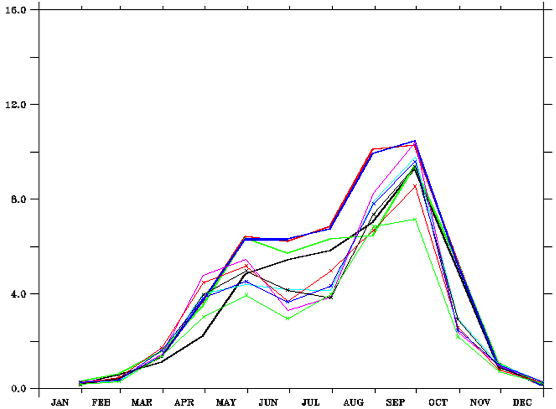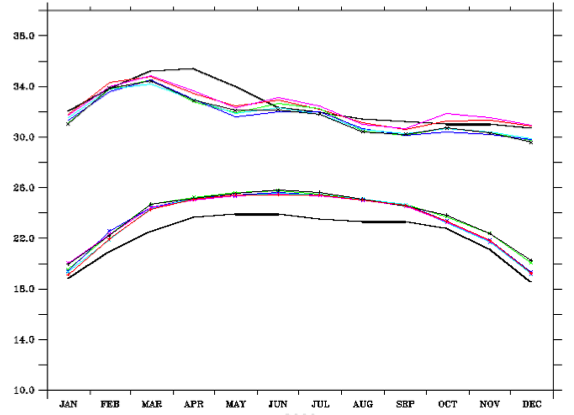 Evaluating Climate Model Data
Evaluating Climate Model Data
The historical or current climate CCAM regional model data at the eight locations chosen for this case study were evaluated using the observation data.
The evaluation was completed for the monthly climatologies of rainfall and maximum and minimum air temperature. Both the temperatures and the rainfall were reasonably well simulated, and the annual cycle was captured well, with mostly small biases. The CCAM model output, based on six GCMs outputs, appears to capture the main features of the climate of the selected sites, giving confidence in the model projections. Model data for stations in the north-west had a slight cold bias in minimum temperature and that of one station located to the south along the peninsula showed a cold bias in the maximum temperature. Models displayed a dry bias with respect to rainfall for the northernmost and the two easternmost stations.
This figure illustrates the evaluation of historical rainfall at Prachinburi station in Thailand, comparing observed gridded datasets with model-simulated data. The pattern and magnitude of the model results compared to the observed datasets are similar, although the model data are slightly dry in mid-year.

This figure shows the evaluation of temperatures at the same station. They are generally well simulated, with a slight minimum temperature warm bias.

